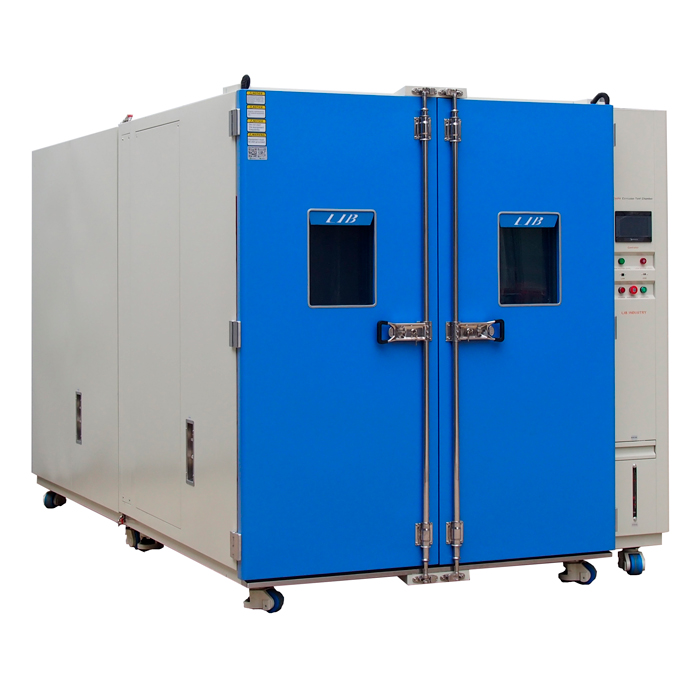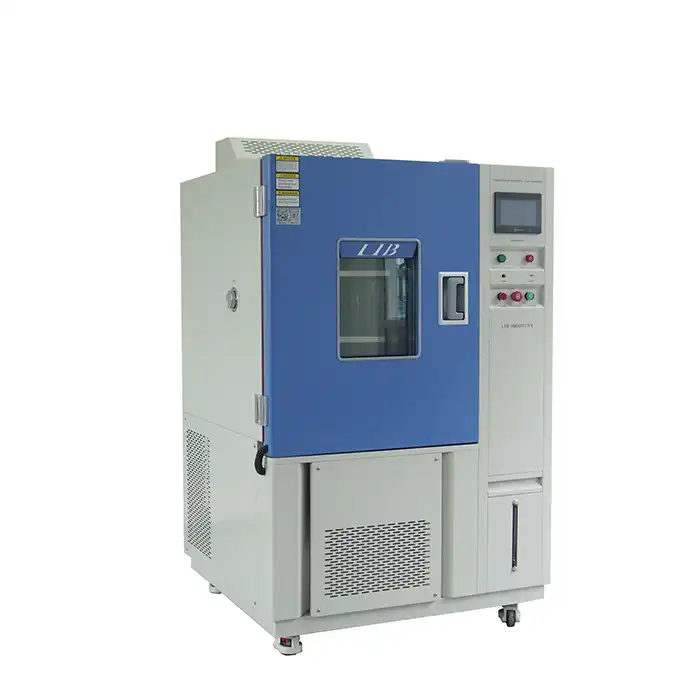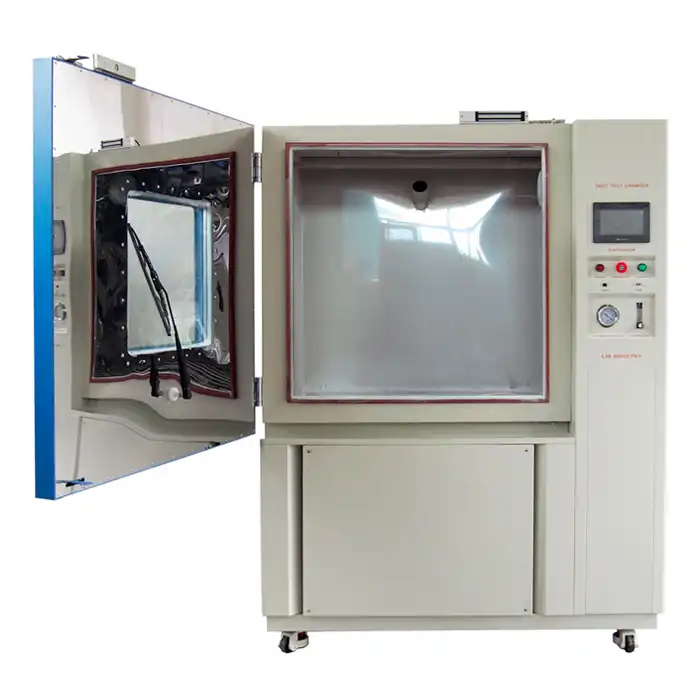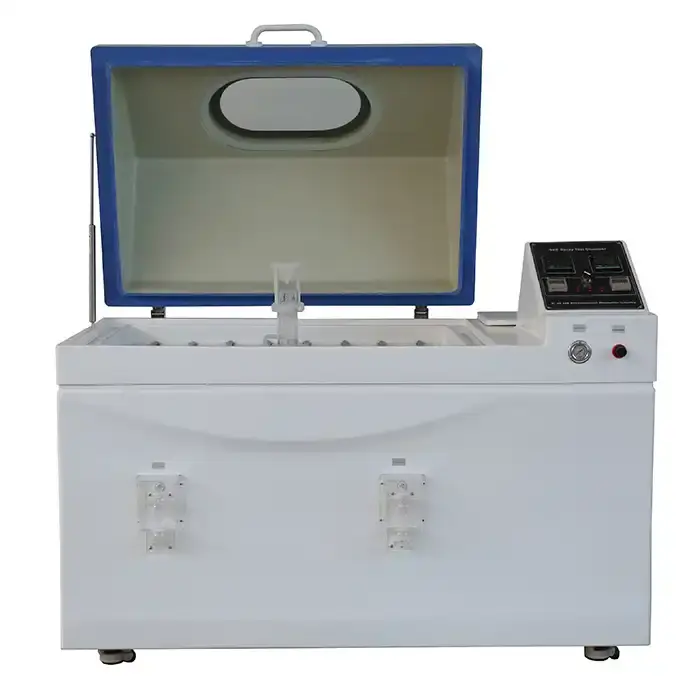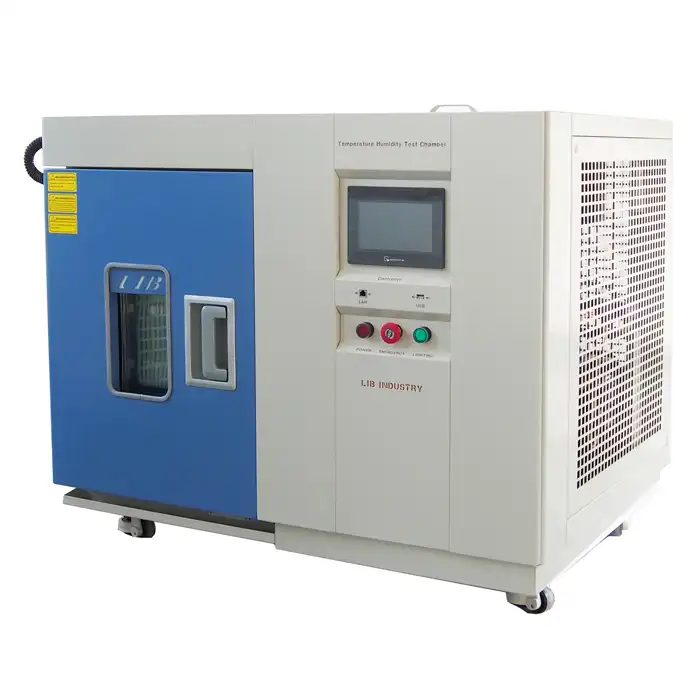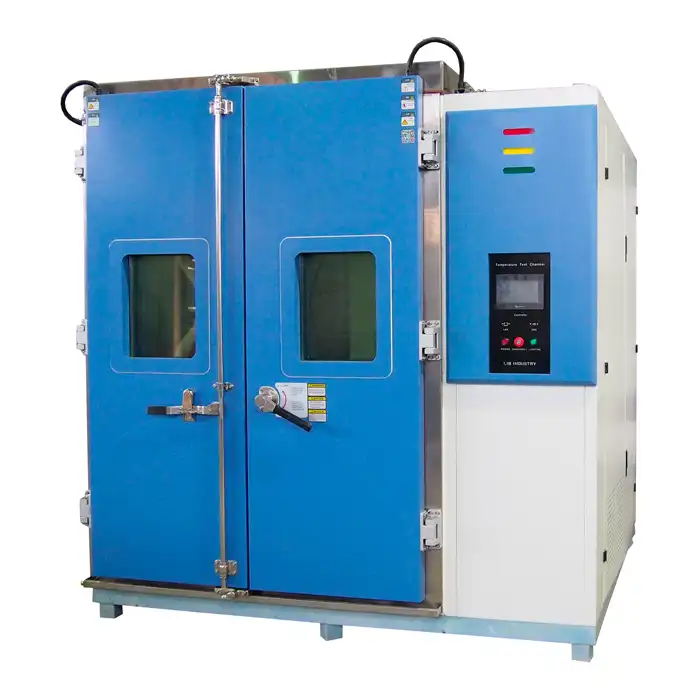Contact Us
 +8618700875368
+8618700875368
No.6 Zhangba First Street, High-Tech Area, Xi'an City, Shaanxi Province, P.R. China 710065
What is an IPX3 x4 test chamber used for?
2024-06-06 18:07:48
What is an IPX3 x4 test chamber used for?
In the domain of item testing and confirmation, the IPX3 x4 test chamber assumes an essential part in guaranteeing the solidness and unwavering quality of different gadgets, particularly those planned for open air or brutal conditions. This article plans to explain the importance and utilization of an IPX3 x4 test chamber, drawing bits of knowledge from definitive sources and respectable sites that rank profoundly on Google's query items.
What is an IPX3 x4 Test Chamber?
An IPX3 x4 test chamber is a specific testing contraption intended to assess the level of insurance given by a gadget against water entrance, especially from splashing water at different points and forces. The "IPX3" assignment implies the chamber's capacity to endure splashing water at a point of up to 60 degrees from the vertical, while the "x4" demonstrates that the test includes four unique places of the gadget under assessment.
Significance of IPX3 x4 Testing
1. Guaranteeing Consistence with Worldwide Guidelines
Administrative Necessities: Numerous businesses should conform to explicit guidelines to sell items in specific business sectors. IPX3 x4 testing guarantees items meet the IEC IP Code necessities for water obstruction.
Confirmation: Breezing through these assessments permits makers to name their items with IP appraisals, which is fundamental for administrative certificate and market acknowledgment.
2. Improving Item Toughness and Unwavering quality
Water Obstruction: Items intended for outside use or in conditions where they may be presented to water should have the option to endure such circumstances without coming up short. IPX3 x4 testing guarantees that these items can deal with water showers and sprinkles.
Life span: Testing distinguishes expected shortcomings in item configuration, permitting producers to cause upgrades that to broaden the item's life expectancy and diminish the probability of water-related disappointments.
3. Helping Buyer Certainty and Fulfillment
Advertising Benefit: Items that are affirmed as water-safe as per IPX3 or IPX4 norms can be showcased all the more successfully, interesting to customers searching for solid and sturdy choices.
Client Confirmation: Realizing that an item has passed thorough water opposition testing gives buyers trust in its quality and execution, prompting higher consumer loyalty.
4. Diminishing Returns and Guarantee Cases
Limiting Disappointments: By guaranteeing that items can endure openness to water, makers can decrease the occurrence of water-related harm and disappointments. This prompts fewer returns and guarantee claims.
Cost Reserve funds: Lower return rates and less guarantee claims bring about huge expense investment funds for producers, working to generally benefit.
5. Appropriate Across Assorted Enterprises
Customer Hardware: Gadgets like cell phones, tablets, and smartwatches that are frequently presented to rain or unintentional sprinkles.
Auto: Parts like sensors, lighting, and electronic frameworks that should work dependably in different weather patterns.
Home Machines: Apparatuses utilized in kitchens, washrooms, and different regions where they might come into contact with water.
Outside Hardware: Items like digging tools, open air lighting, and surveillance cameras that need to endure downpour and sprinkles.
Clinical Gadgets: Gadgets utilized in conditions where they may be presented to liquids, guaranteeing they stay protected and utilitarian.
Applications of IPX3 x4 Test Chambers
1. Consumer Electronics
Smartphones and Tablets: Ensuring devices can handle accidental spills, rain, and use in humid environments.
Wearable Technology: Testing smartwatches, fitness trackers, and other wearable devices to ensure they are resistant to sweat, rain, and occasional splashes.
Portable Speakers: Verifying that speakers can endure outdoor use, poolside conditions, and rain exposure.
2. Automotive Components
Exterior Lighting: Ensuring headlights, tail lights, and other exterior lights can withstand rain and washing.
Sensors and Cameras: Testing automotive sensors, backup cameras, and other electronic components that are exposed to the elements.
Electrical Systems: Verifying that various electrical components in a vehicle are protected from water ingress.
3. Home Appliances
Kitchen Gadgets: Ensuring devices like blenders, mixers, and coffee makers can handle spills and cleaning.
Bathroom Fixtures: Testing shower heads, faucets, and other fixtures to ensure they resist splashing water.
Laundry and Cleaning Equipment: Verifying that washing machines, dryers, and vacuum cleaners can withstand water exposure during regular use.
4. Outdoor Equipment
Lighting Solutions: Testing outdoor lights and garden lights to ensure they can function in rain and adverse weather conditions.
Security Cameras: Ensuring that outdoor security cameras are resistant to rain and splashing water.
Garden Tools: Verifying that electric garden tools and equipment are durable enough to handle outdoor use and wet conditions.
5. Medical Devices
Portable Medical Equipment: Ensuring devices like portable monitors and diagnostic tools can resist water exposure in various environments.
Home Healthcare Products: Testing products used in home healthcare settings, where they may be exposed to water and fluids.
Hygiene and Sanitation Equipment: Verifying that equipment used for hygiene purposes can withstand cleaning processes involving water.
6. Industrial and Commercial Equipment
Control Panels: Ensuring that industrial control panels and electronic interfaces are resistant to water exposure in factories and outdoor settings.
Sensors and Actuators: Testing industrial sensors and actuators that may be exposed to water during operations.
Commercial Kitchen Equipment: Verifying that equipment used in commercial kitchens, such as dishwashers and food processors, can handle water exposure.
Insights from Top Google-ranked Websites
Examining the content from reputable websites that rank highly on Google for the query "What is an IPX3 x4 test chamber used for?" provides valuable insights into the practical applications and industry standards associated with this testing equipment.
One such source is the International Electromechanical Commission (IEC), a globally recognized organization that develops and publishes international standards for electrical and electronic technologies. According to the IEC 60529 standard, which defines the Ingress Protection (IP) code system, an IPX3 x4 test chamber is instrumental in verifying the water resistance of products, particularly those exposed to spraying water.
Another authoritative website providing insights into IPX3 x4 testing is TÜV Rheinland, a leading provider of testing, inspection, and certification services. Their documentation on environmental testing highlights the importance of IPX3 x4 chambers for assessing the water ingress protection of products, thereby ensuring their reliability and compliance with regulatory requirements.
Conclusion
In conclusion, an IPX3 x4 test chamber serves as a critical tool for evaluating the water resistance of various devices, ranging from consumer electronics to industrial equipment. By subjecting products to controlled water spray conditions, manufacturers can ascertain their durability and suitability for outdoor use, thereby instilling confidence in consumers and meeting regulatory standards. Please feel free to contact us at ellen@lib-industry.com. We welcome inquiries and look forward to exploring mutually beneficial partnerships.
References:
1. International Electrotechnical Commission (IEC) - https://www.iec.ch/
2. TÜV Rheinland - https://www.tuv.com/
Send us a message
Please Leave your Message Here! We Will Send Detail Techincal Brochure and Quotation to you!

